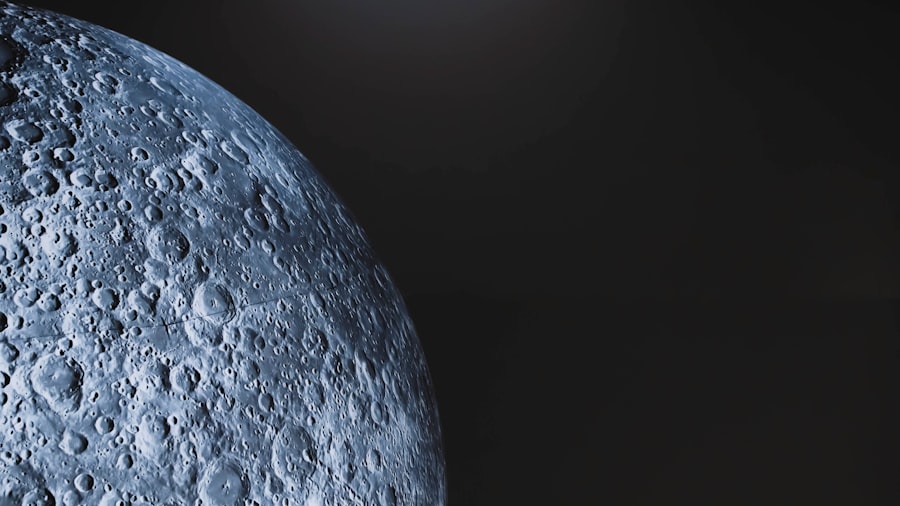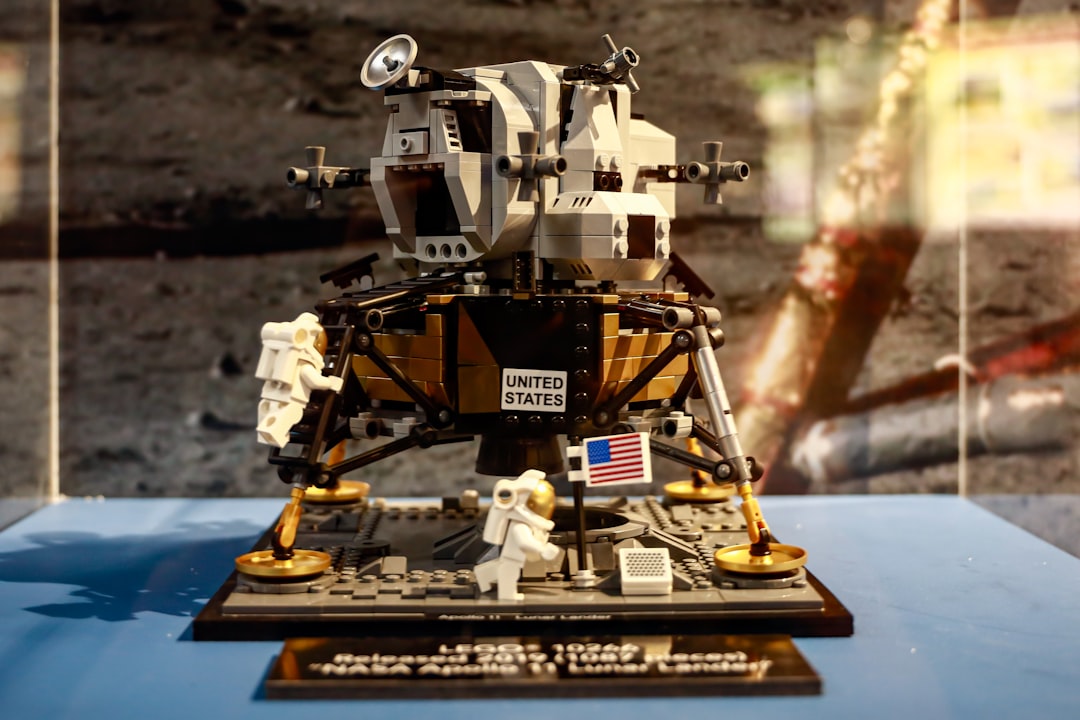As humanity embarks on an ambitious journey to establish a permanent presence on the Moon, the concept of lunar base defense has emerged as a critical area of focus. The Moon, with its vast resources and strategic significance, is poised to become a hub for scientific research, exploration, and even commercial activities. However, the establishment of lunar bases also brings forth a myriad of challenges, particularly concerning their security and defense.
The need to protect these installations from potential threats is paramount, as the Moon’s environment is not only inhospitable but also fraught with risks that could jeopardize human life and mission success. The defense of lunar bases encompasses a wide range of considerations, from physical threats posed by natural phenomena to potential hostile actions from other nations or entities. As nations and private companies race to stake their claims on lunar territory, the importance of developing robust defense mechanisms cannot be overstated.
This article delves into the various aspects of lunar base defense, exploring the threats faced, current strategies in place, and the future of this vital field.
Key Takeaways
- Lunar bases face threats from micrometeoroids, radiation, and potential human conflict
- Current defense systems include physical barriers, surveillance, and cybersecurity measures
- Challenges of defending a lunar base include limited resources and the harsh lunar environment
- Developing lunar base defense technology requires innovation and adaptation to the lunar environment
- International cooperation is essential for the future of lunar base defense and security
Threats to Lunar Bases
The threats to lunar bases can be categorized into two primary types: natural and human-made. Natural threats include meteorite impacts, solar radiation, and extreme temperature fluctuations. The Moon’s surface is constantly bombarded by micrometeorites, which can cause significant damage to structures if not adequately shielded.
Additionally, the lack of a substantial atmosphere means that lunar bases are exposed to high levels of solar radiation, which poses health risks to inhabitants and can damage electronic equipment. On the other hand, human-made threats are equally concerning. As multiple nations and private entities aim to establish a foothold on the Moon, the potential for conflict over resources and territory increases.
The militarization of space has become a topic of debate, with concerns that lunar bases could become targets for sabotage or espionage. Moreover, the possibility of rogue actors or non-state entities attempting to disrupt operations adds another layer of complexity to lunar base defense.
Current Defense Systems and Strategies

Currently, the defense systems and strategies for lunar bases are still in their infancy, largely due to the nascent stage of lunar exploration. However, several concepts have been proposed and are under consideration. One approach involves the use of protective shielding for structures to mitigate the impact of micrometeorites and radiation.
This could include materials that are both lightweight and durable, capable of withstanding harsh lunar conditions. In addition to physical defenses, there is a growing emphasis on developing surveillance systems to monitor potential threats. These systems could include satellites equipped with advanced sensors capable of detecting incoming projectiles or monitoring for unusual activity in the vicinity of lunar bases.
Furthermore, establishing protocols for rapid response in the event of an emergency is crucial for ensuring the safety of personnel and equipment on the Moon.
Challenges of Defending a Lunar Base
| Challenges | Description |
|---|---|
| Radiation | The lack of atmosphere on the moon exposes astronauts to high levels of radiation from the sun and cosmic rays. |
| Micrometeoroids | The moon’s surface is constantly bombarded by small meteoroids, posing a risk to the base and its inhabitants. |
| Extreme Temperatures | The moon experiences extreme temperature variations, from extremely hot during the day to extremely cold at night. |
| Dust and Regolith | The fine lunar dust can be abrasive and hazardous to equipment and human health if inhaled. |
| Isolation | A lunar base would be isolated from Earth, posing psychological and logistical challenges for the crew. |
Defending a lunar base presents unique challenges that differ significantly from those encountered on Earth. One major challenge is the logistical complexity involved in transporting defense systems and personnel to the Moon. The cost and technical difficulties associated with launching and deploying advanced technologies cannot be underestimated.
Additionally, once on the Moon, maintaining and repairing these systems will require innovative solutions due to the lack of readily available resources. Another significant challenge is the psychological aspect of living in such an isolated environment. The inhabitants of a lunar base will face not only physical threats but also mental health challenges stemming from confinement and distance from Earth.
Ensuring that personnel are equipped to handle these stressors is essential for maintaining operational readiness and morale.
Developing Lunar Base Defense Technology
The development of technology specifically tailored for lunar base defense is crucial for ensuring the safety and security of these installations. Research and development efforts must focus on creating systems that can operate effectively in the Moon’s harsh environment. This includes developing materials that can withstand extreme temperatures and radiation levels while remaining lightweight for transport.
Moreover, advancements in robotics and automation could play a pivotal role in lunar base defense. Autonomous drones or rovers could be deployed for surveillance and reconnaissance missions, providing real-time data on potential threats without putting human lives at risk. The integration of artificial intelligence into these systems could enhance their effectiveness by enabling them to analyze data and respond to threats more rapidly than human operators.
Physical Defense Systems for Lunar Bases

Physical defense systems for lunar bases will likely encompass a variety of technologies designed to protect against both natural and human-made threats. One potential solution is the construction of reinforced habitats that can withstand impacts from micrometeorites while providing adequate shielding from radiation. These habitats could be designed with multiple layers of protective materials, ensuring that even if one layer is compromised, others remain intact.
In addition to structural defenses, active defense systems may be necessary to intercept incoming threats. This could involve deploying laser systems capable of targeting small projectiles or utilizing kinetic interceptors designed to neutralize larger threats before they reach their target.
Cybersecurity for Lunar Bases
As lunar bases become increasingly reliant on technology for their operations, cybersecurity will emerge as a critical component of their defense strategy. The interconnected nature of systems used in lunar bases makes them vulnerable to cyberattacks that could disrupt communications, sabotage equipment, or compromise sensitive data. Protecting against these threats will require robust cybersecurity measures tailored specifically for the unique challenges posed by a lunar environment.
Implementing strong encryption protocols, regular software updates, and intrusion detection systems will be essential for safeguarding lunar base operations. Additionally, training personnel in cybersecurity awareness will help create a culture of vigilance against potential cyber threats. As more nations and private entities engage in lunar exploration, collaboration on cybersecurity best practices will be vital for ensuring the integrity of all lunar operations.
Surveillance and Early Warning Systems for Lunar Bases
Effective surveillance and early warning systems are fundamental components of any comprehensive defense strategy for lunar bases. These systems must be capable of detecting potential threats well in advance, allowing for timely responses to mitigate risks. Satellite-based surveillance could provide a broad overview of activities in the vicinity of lunar bases, while ground-based sensors could monitor for specific threats such as incoming projectiles or unauthorized access attempts.
Integrating advanced technologies such as machine learning algorithms into surveillance systems can enhance their ability to analyze data and identify patterns indicative of potential threats. By leveraging real-time data from multiple sources, operators can make informed decisions about how to respond to emerging situations effectively.
Human Factors in Lunar Base Defense
The human element plays a crucial role in the defense of lunar bases, as personnel will be responsible for implementing strategies and responding to threats. Understanding the psychological and social dynamics at play in such an isolated environment is essential for maintaining operational effectiveness. Training programs must address not only technical skills but also interpersonal communication and teamwork to foster a cohesive unit capable of responding effectively under pressure.
Moreover, ensuring that personnel have access to mental health resources will be vital for maintaining morale and resilience in the face of challenges. The stresses associated with living on the Moon can take a toll on individuals’ mental well-being, making it imperative that support systems are in place to help them cope with isolation and uncertainty.
International Cooperation in Lunar Base Defense
As multiple nations pursue lunar exploration initiatives, international cooperation will be essential for establishing effective defense mechanisms for lunar bases. Collaborative efforts can lead to shared resources, knowledge exchange, and joint training exercises that enhance overall preparedness against potential threats. Establishing frameworks for cooperation will also help mitigate tensions that may arise from competing interests on the Moon.
International agreements governing activities on the Moon could provide guidelines for responsible behavior among nations and entities operating in this new frontier. By fostering an environment of collaboration rather than competition, stakeholders can work together to ensure that lunar exploration remains peaceful and beneficial for all involved.
Future of Lunar Base Defense
The future of lunar base defense is likely to evolve rapidly as technology advances and more entities engage in lunar exploration. As humanity establishes a more permanent presence on the Moon, the need for comprehensive defense strategies will become increasingly apparent. Innovations in materials science, robotics, artificial intelligence, and cybersecurity will shape the landscape of lunar base defense.
Moreover, as nations recognize the strategic importance of lunar resources, competition may intensify, necessitating proactive measures to ensure security and stability on the Moon. The development of international norms governing behavior in space will play a crucial role in shaping how nations approach lunar base defense moving forward. In conclusion, as humanity stands on the brink of a new era in space exploration with plans for permanent lunar bases, addressing the multifaceted challenges associated with their defense is imperative.
From natural hazards to human-made threats, a comprehensive approach that encompasses physical defenses, cybersecurity measures, surveillance systems, and international cooperation will be essential for safeguarding these vital installations. The future holds great promise for lunar exploration; however, it also demands vigilance and innovation in defense strategies to ensure success in this uncharted territory.
In recent years, the concept of establishing a lunar base has transitioned from science fiction to a tangible goal for space agencies worldwide. As these plans progress, the need for effective defense strategies and systems to protect such bases becomes increasingly critical. An insightful article discussing various lunar base defense strategies can be found on Real Lore and Order. This article delves into the potential threats that lunar bases might face and explores innovative defense mechanisms that could be employed to safeguard these extraterrestrial outposts. For more detailed information, you can read the full article by visiting this link.
WATCH THIS! 🚀 Why The Moon Is The Next Battlefield: The Geopolitics of Cislunar Space
FAQs
What is a lunar base defense system?
A lunar base defense system is a set of strategies and technologies designed to protect a lunar base from potential threats, such as meteorite impacts, radiation, and potential human or robotic intruders.
What are some potential threats to a lunar base?
Potential threats to a lunar base include meteorite impacts, solar radiation, extreme temperature fluctuations, and potential human or robotic intruders.
What are some strategies for defending a lunar base?
Strategies for defending a lunar base may include the use of physical barriers, such as walls or domes, as well as advanced surveillance and monitoring systems to detect and deter potential threats.
What technologies are used in lunar base defense systems?
Technologies used in lunar base defense systems may include advanced surveillance cameras, motion sensors, automated defense systems, and radiation shielding materials.
How are lunar base defense systems different from Earth-based defense systems?
Lunar base defense systems must be specifically designed to withstand the unique challenges of the lunar environment, such as low gravity, extreme temperature fluctuations, and the lack of a breathable atmosphere. Additionally, the threat of meteorite impacts is a more significant concern on the moon than on Earth.
